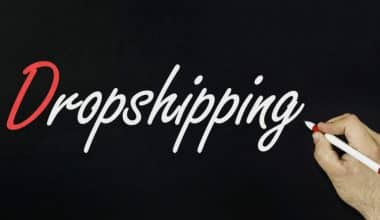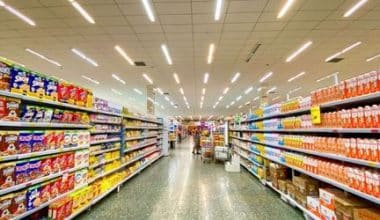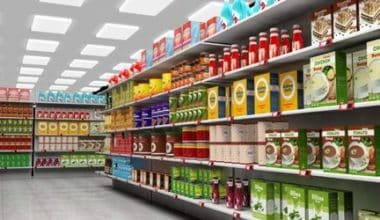Online merchants are always looking for new ways to bring new clients to their ECommerce stores. And Google’s Product Listing Ads are a major traffic generator. Google Product Listing Ads are specifically created for ECommerce and are more visually appealing, and informational, and attract customers who are ready to buy. Product Listing Ads can be used to increase your returns if you use the proper method. To learn more about it, see this article.
What are Product Listing Ads?
When a customer searches for a product on Google, Product Listing Ads appear. ECommerce businesses utilize Product Listing Ads (PLAs) to market their products, increase website traffic, and generate high-quality lead ads. PLAs increase the discoverability of all your products among all of your clients. Simply said, PLAs can bring clients to you without even trying.
Product Listing Ads provide the user with detailed information, such as up-to-date Product Images, Pricing, Buying Options, and Customer Reviews. When a customer looks for a product online, you won’t get lost in the crowd; instead, you’ll be able to skip ahead and grab their attention.
How To Set UpProduct Listing Ads
PLAs let customers browse products before visiting a company’s website. Early visibility boosts conversions and returns on investment (ROI).
#1. Accounts for AdWords and Merchant Center.
The first step in producing product listing ads is to set up a Google or Bing Ads account and connect it to a Merchant Center (MC) account. This can be accomplished by following Google instructions and giving important business information such as the firm name and website URL.
#2. Create PLA advertising campaigns.
To generate PLAs, businesses must be authorized as a retailer and confirmed by Google. Connecting a website to Google Analytics is a simple approach to get a company approved to execute PLA ad campaigns. Companies can advertise new campaigns using Google Merchant Center product inventories.
#3. Set goals and upload products.
By automatically listing inventory data for PLAs, Google makes it easier to select relevant keywords. Marketers can also select keywords manually using an automated feed. Companies should consider product hierarchy and grouping while uploading products for optimal results. Product targeting enables organizations to place separate bids on specific products.
#4. Select a bidding strategy.
Comparable to competitive auction ads, product listing ads are similar. Bidding techniques and CPC are determined by the items and industry. Businesses should submit larger bids on the most important products because bidding values can influence the position of the ad.
#5. Monitor the success of your campaign.
Performance reports and statistics related to Merchant Center data are used to ensure that product targets meet the feed. Consistent tracking is critical since an attribute gap can prevent ads from running for certain targets.
Benefits of Product Listing Ads
PLAs have an effect on marketing, branding, and sales operations. They can benefit firms wanting to establish an online presence and sell more products. Here are some other ways that PLAs can help a business:
#1. Increase brand visibility.
Product listing ads raise brand and product awareness by putting them in the spotlight. Because of their prominent search result location, the ads reach a larger and more relevant audience. PLAs give businesses free exposure because they only pay when users click on their ads.
#2. Provide a unified user experience.
PLAs offer value to the customer experience and make buying more convenient because they target the proper demographic. Users may easily navigate to product pages and review prices and images. Including specific business information in product listing ads can assist clients to move faster through the sales funnel.
#3. Boost conversions.
Product listing ads can drive more traffic to your website and increase click-through rates (CTR). These rates also have an effect on conversions because customers are more inclined to click on things they wish to buy.
#4. Improves Product management
PLAs reveal which goods receive the most attention from searchers. This data aids in the development of product management strategies. Product listing ads can be integrated with a variety of different product marketing tools to extend the product lifecycle. Product management software and PLAs are used by businesses that wish to improve their overall products to enable effective ideation, product pricing, and customer delivery.
What is Google Product Listing Ads?
A Google Product Listing Ad (PLA) is a data-driven advertisement that appears in Google search when a consumer searches for a product.
PLAs, as opposed to ordinary Google Search Ads, provide the user with extra information, such as images, reviews, prices, purchasing alternatives, and so on.
How Do Google Product Listing Ads Work?
Before we get into how to use Google Product Listing Ads to drive and boost your ROAS, let’s talk about how PLAs function in terms of technology.
Here’s a simple procedure:
- Fill out the Google Merchant Center form with your product data stream.
- Inside Google Adwords, create a Product Listing Ad campaign.
- You will construct Ad Groups for specific products inside that campaign (more on this below).
- Place your bid.
Product Listing Ads Requirements
PLAs are not appropriate for every merchant. Here are some questions to think about:
#1. Can your Google Merchant Center and Google Ads account to be connected?
This is the primary reason why PLA initiatives fail to go live. If the two accounts aren’t linked, your campaign won’t run since Google Ads requires the data feed information you submit to the Google Merchant Center to generate Product ads.
#2. How many items do you sell?
If you sell fewer than 500 things, you may receive less attention than brands that sell more than 500 products.
#3. What is the nature of your product?
PLAs are ideal for promoting less competitive product categories such as automobile parts, infant supplies, tools, or furnishings. Conversely, more competitive products, such as garments or footwear, may struggle to profit from this type of campaign if you are not a household name like Nike or Adidas.
#4. How much money can you afford to spend on Google?
Bids and daily budgets differ greatly between merchants. However, in order to earn from Google PLAs and have your ads displayed throughout the day, you must have a budget.
#5. How much must you sell to make money from Google Product Listing ads?
If your margins are extremely tight, you may have problems profiting or may need to reduce your daily spending. Of course, this varies greatly depending on your items, competitors, and profit margins.
#6. How good is the quality of your website?
Google places high value on on-site quality and links as part of its algorithm for determining site and merchant quality.
#7. Is it simple to make modifications to your data feed?
Otherwise, managing your PLA campaign will be greatly hampered. Technical things you won’t be able to accomplish unless you modify your data stream include (but are not limited to):
- Creating your campaign
- Creating ad groups for best sellers, products priced above or below a specific threshold, seasonal items, and so on.
- Changing or updating your campaign’s sales
- Validation error resolution (when setting up ad groups)
- Avoiding rejection of your campaign due to missing or erroneous data feed elements
Once you’ve reviewed all of the above and determined that PLAs can benefit you, you’ll need to know how to maximize them.
Best Practices for Google Product Listing Ads
#1. Separate product categories
“All products” is the default setting. However, just as you wouldn’t use the same bid for all of your keywords, you shouldn’t use the same bid for all of your goods. So, using a tiered, relational structure, build multiple product groups:
Begin with broad classifications, such as product type and category. Then, if there is sufficient data and a need for additional divisions, continue segmenting products with the same or more specialized attributes.
This strategy will:
- Capture your full inventory to provide total bid coverage.
- Give your bidding system more information to help with bid optimization.
- Improve visibility into performance reports
- Align bid management with your goals.
- Make Account management easier.
- Avoid wasting ad dollars on item IDs or small product groups with little to no activity.
#2. Create campaigns for both brands and non-brands.
When customers conduct branded product searches, using separate branded and non-branded ads helps maximize your traffic. The procedure is straightforward:
- Create two different shopping campaigns.
- Add your brand terms to the non-brand campaign as negative keywords.
- Set the brand campaign priority to “low” (a special shopping campaign setting). This allows you to budget and bid correctly for brand and non-brand searches, which, in most circumstances, warrant their distinct bids.
#3. Improve your data feed
Although the whole list is lengthier, here are three easy recommendations to help you get there:
Make use of your brand’s strength by including it in the product title.
To boost match rates and CTRs, choose the most exact Google Product Category available.
Custom Labels can help you better categorize your products depending on marketing objectives such as ROI or price range.
#4. Review the Merchant Center on a regular basis.
This is significant because the MC will notify you of any cautions, problems, or violations that your stream may encounter, allowing you to promptly address them. The majority are simple to correct and only require awareness to detect. Regularly monitoring the MC and addressing any mistakes guarantees that all of your items remain active and your Google data quality score remains high.
#5. Make your ads more appealing
Enhancements to your PLAs may be added to draw greater notice. Options include
- Special offerings to feature your online promotions with your ad. These have no added cost, but CPC pricing still applies.
- Product ratings will aid buyers in making purchasing decisions with important information. These only appear on ads with a 5-star rating system and a total number of reviews. To be eligible, a product must also have at least three reviews.
- Use Google Customer Reviews to gather useful feedback from customers who have purchased from your website.
(Note: If you choose one of these upgrades, it may not appear every time your ad appears.)
Product Listing Ads Specifications and Standards
In addition to the ad specifications listed below, Google advises advertisers to ensure that everything they submit is of the same quality that they would present to a client.
ID
- Required: The unique identifier of the product
- Syntax: Maximum of 50 characters
- Schema.org property: Product.sku.
- Use a distinct value for each product (when possible, use the product’s SKU).
- When upgrading your data, keep the ID the same.
- Only use valid Unicode characters (avoid invalid characters like control, function, or private area characters)
- Use the same ID across nations or languages for the same product.
Title
- Required: The product name.
- Syntax: Maximum of 150 characters
- Schema.org property: Product.name
- Match the headline from your post-click landing page to the product description.
- Include no promotional material such as “free shipping,” all capital letters, or gimmicky foreign characters.
- Include a distinguishing attribute, such as color or size, for variants.
- Include “with contract” if mobile devices are sold with a contractor.
Description
- Required: The product’s description is required.
- Syntax: 5,000 characters maximum
- Property on Schema.org: Product. description
- Match the headline from your post-click landing page to the product description.
- Include no promotional material such as “free shipping,” all capital letters, or gimmicky foreign characters.
- Include only product information (no connections to your store, sales information, details about competitors, additional products, or accessories).
- Make use of formatting tools such as line breaks, lists, and italics.
Link
- Required: Your product’s post-click landing page.
- Offer is a Schema.org property.
- Start with http or https and your validated domain name.
- Use an encoded URL in accordance with RFC 2396 or RFC 1738.
- Unless legally needed, do not link to an interstitial page.
- If necessary, use an in-domain tracking URL (too many redirects can increase latency)
Image
- The main image of your product is required.
- Formats accepted: Non-animated GIF (.gif), JPEG (.jpg/.jpeg), PNG (.png), BMP (.bmp), and TIFF (.tif/.tiff) formats are supported.
- Non-apparel items: A minimum of 100 × 100 pixels
- Apparel items: A minimum of 250 by 250 pixels
- Maximum resolution: 64 megapixels (or 16MB max file size)
- Please do not enlarge an image or upload a thumbnail.
- No promotional text, watermarks, or borders are permitted.
- There will be no placeholders or generic graphics unless:
- Categories such as Hardware and Vehicles & Parts (illustrations accepted)
- Paint classification (single color images accepted)
Image URL
- Required: The primary picture URL for your product
- The following Schema.org property: Product. image
- Link to your product’s main image
- Begin with http or https.
- Use an encoded URL in accordance with RFC 2396 or RFC 1738.
- Ensure that Google can crawl the URL (robots.txt configuration allowing Googlebot and Googlebot-image)
Additional Image Link
- Optional: An additional image URL for your product
- Syntax: 2,000 characters maximum
- Except for: meet standard image link requirements
- The image can incorporate product staging and a demonstration of the product in use.
- Graphics or illustrations are acceptable.
- Include this feature multiple times to submit up to ten more product photos.
Mobile Link
- Optional: If your product’s mobile post-click landing page differs from the desktop version, use that URL.
- Maximum of 2,000 alphanumeric characters
- Comply with frequent link requirements
- Visit Google’s support page for shopping campaigns for step-by-step instructions on how to set up Google Product Listing ads.
- Bonus: The Google Merchant Center Import tool makes it simple to import your Google Product Listing ads to Bing, which is a big feature of PLAs that has not yet been mentioned.
Conclusion
Since its introduction in 2010, advertising with PLAs has grown in popularity. Product Listing Ads let you establish a strong online presence and emphasize your product and services. Using only expanded Text Ads is the simplest approach to capture your client’s attention and instantly outperform other brands.
These advertisements raise brand awareness while also improving client experience and ease. In a nutshell, PLAs make shopping easier.
- LISTING AGREEMENT: Exclusive List Agreement
- WHAT IS A MERCHANT? Types, Accounts And Services
- LISTING AGENT VS SELLING AGENT: Definition and Differences
- OPEN LISTING: A Complete Overview, Types, And Examples
- Check Card Balance: How To Check Card Balance(+Quick Guide)






